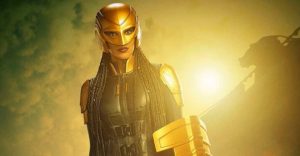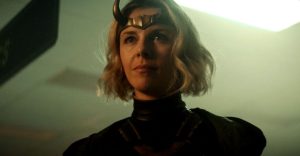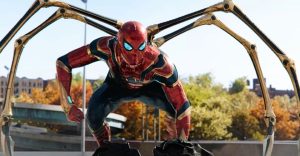The Matrix Resurrections Wastes Its Best Morpheus Idea

WARNING: The following contains SPOILERS for The Matrix: Resurrections.
Morpheus is different in The Matrix Resurrections, but the sequel wastes its biggest change to the character. The long-awaited follow-up to the original The Matrix trilogy, this new entry is brimming with love and appeals to audience nostalgia. Director Lana Wachowski’s The Matrix Resurrections even includes amounts of footage from the original 1999 movie.
There are also many, many nods made to the original Matrix movie in addition to the flashback footage, and even some references to the divisive sequels The Matrix Reloaded and The Matrix Revolutions. Yet, there are some notable new aspects introduced in The Matrix Resurrections. The Architect has been replaced by The Analyst. The Oracle is no more. Zion has crumbled, and was renamed Io. Agent Smith is now played by Mindhunter star Jonathan Groff, and perhaps most notably of all, Laurence Fishburne’s Morpheus is nowhere to be found.
It seems Morpheus passed away in the time between Revolutions and Resurrections, and taking his place in The Matrix Resurrections‘ story is a purely digital version of Morpheus actually created by Neo’s Thomas Anderson as a video game designer persona. It’s revealed that this version of Morpheus, now played by Candyman‘s Yahya Abdul-Mateen II, was designed using elements taken from Neo’s memories of both Morpheus and Agent Smith. This combination could make Mateen’s Morpheus an extremely unique and interesting character, but instead, almost nothing is done with the concept, leading to a missed opportunity.

Considering that when Thomas Anderson designed this Morpheus program inside his modal, he was struggling with his identity, it makes sense that aspects of both Morpheus and Smith were combined since both were profoundly important to Neo’s development as The One. So many things could’ve been done with the idea of a character with elements of both Neo’s greatest mentor and his greatest nemesis; yet, outside of a few moments early on, little is seen of Morpheus’ agent side. Once Bugs has gotten Neo and Morpheus together inside the matrix, Morpheus basically just acts like classical Morpheus from then on, outside of a bit more flamboyance and some brightly colored outfit choices.
While it’s possible that Lana Wachowski and her team thought that Groff’s new version of Smith was enough Smith for one movie, and didn’t want him to have to compete with a Smith-esque version of Morpheus, that begs the question of why throw that tidbit of plot in there at all. Mateen’s Morpheus could’ve easily been written to simply be a skewed version of Fishburne’s character that was born out of Neo’s hazy memories of their shared past. Instead, he’s a purported blend of Morpheus and Smith that has almost no Smith elements to be seen. This flaw certainly isn’t a fatal one for The Matrix Resurrections, even if it’s one of many — including a large Trinity-based plot hole — but it does make one wonder if more material showing this aspect might’ve been cut before release.
About The Author

















